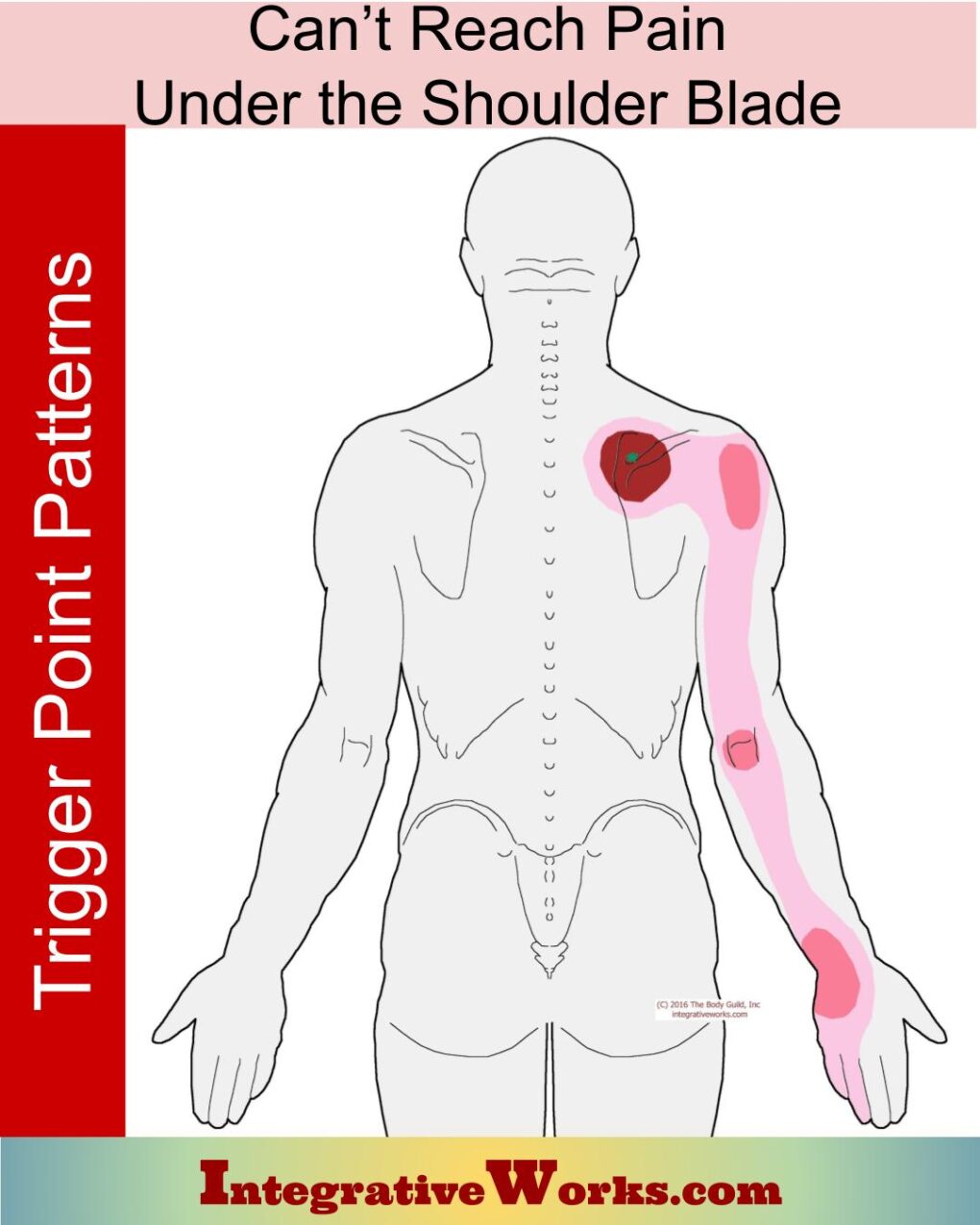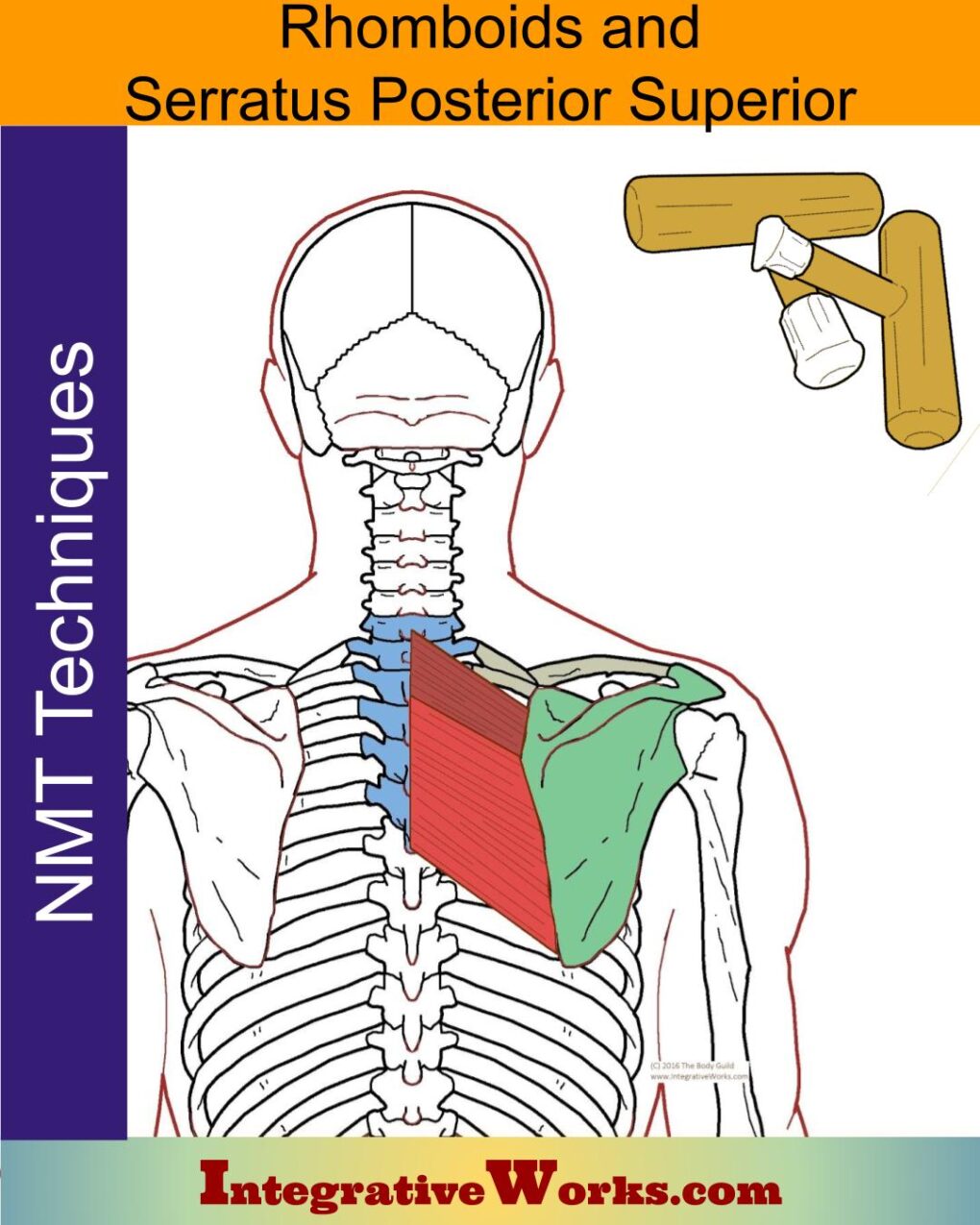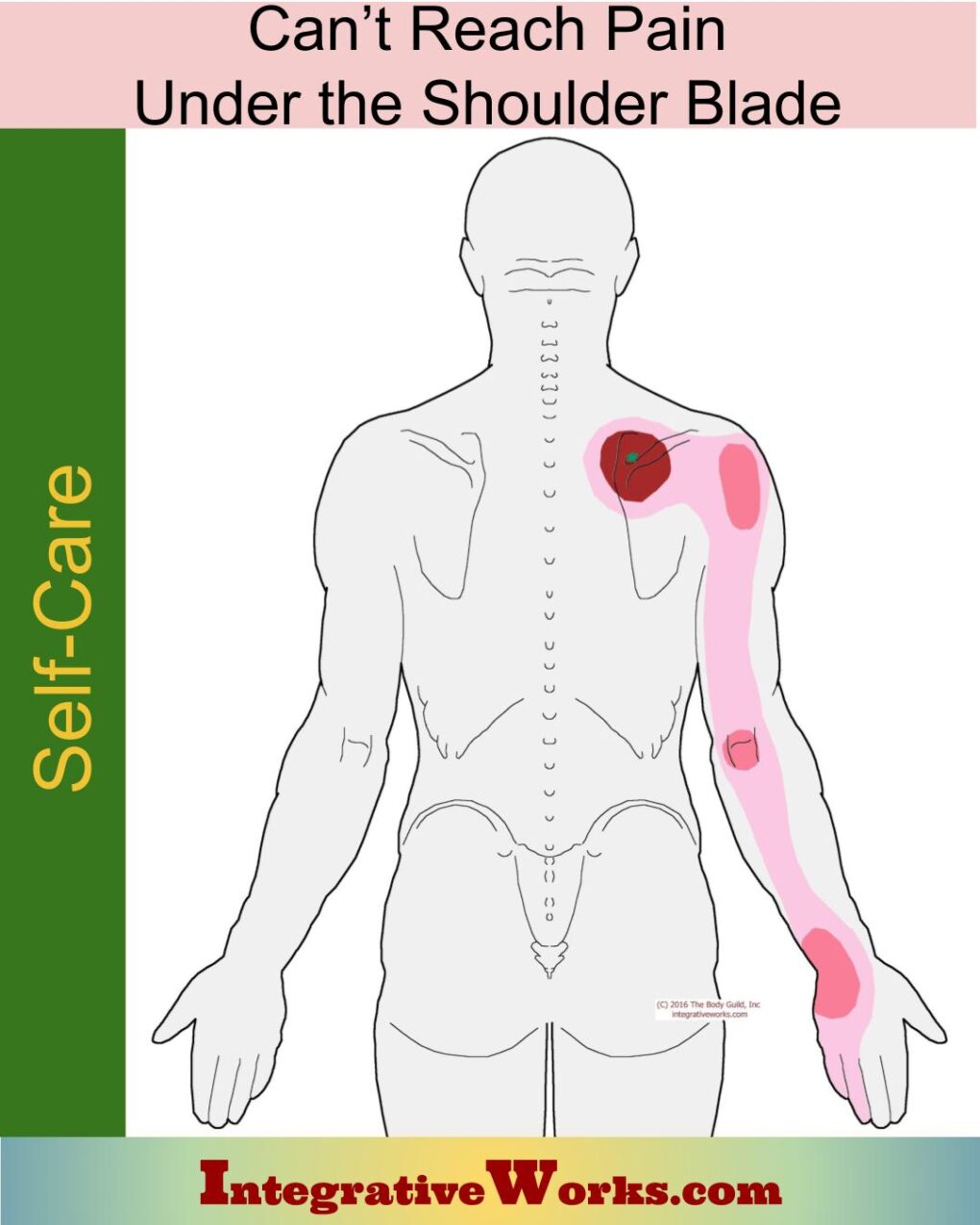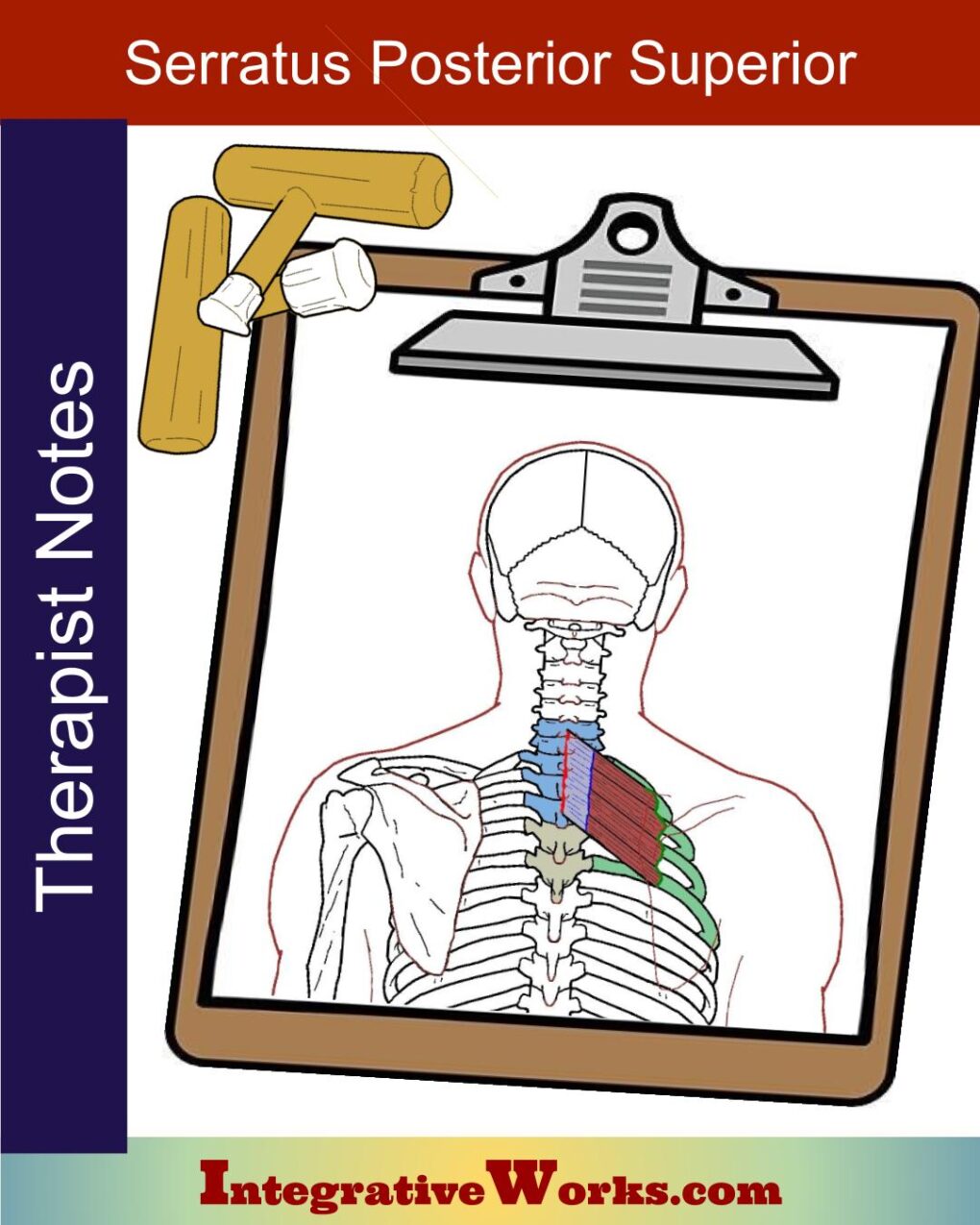Here, you will find a functional overview of the anatomy of the serratus posterior superior. I also explore its role as a respiratory muscle. Afterward, I have links to related posts.
Anatomy Overview
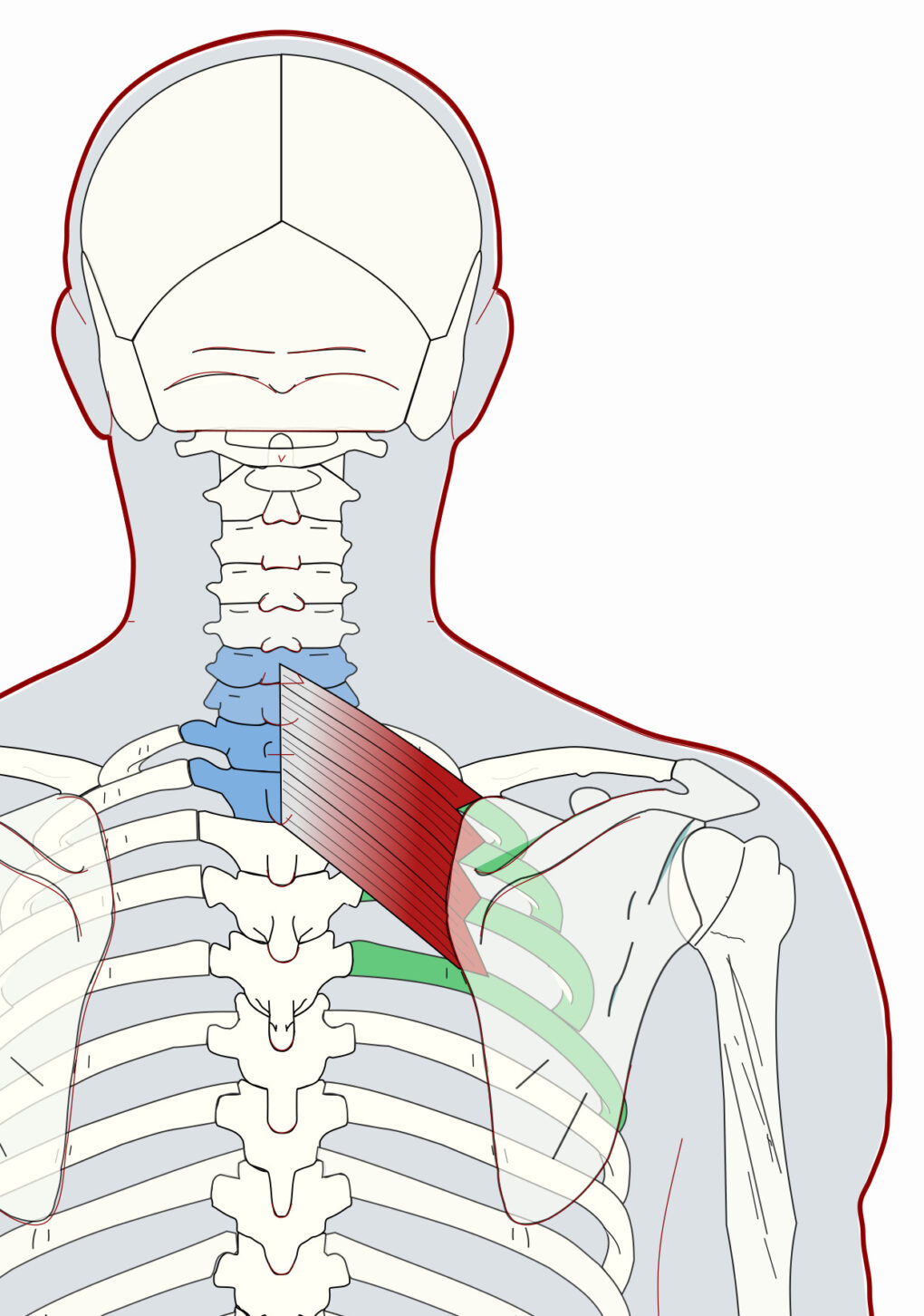
Overview
This muscle is the most superficial of the intrinsic back muscles and straps across the erectors, levator costae, and intrinsic spine muscles.
Origin
- nuchal ligament from about C6 and along the supraspinous ligament
- spinous processes from C7 to T2 or T3.
Insertion
- superior aspect of ribs 2-5, just lateral to the angle of the rib
Function
- elevation of the ribs, assists in inhalation
Nerve
- T1-T4
Anomalies, Etc.
Its strongest insertion attaches to the superior aspects of the 2nd through 5th ribs near the lateral angle. It feathers into the fascia between the ribs in dissections, forming a rhomboid rather than the finger-like bellies that one commonly sees in illustrations.
Serratus posterior superior attaches to C6-T3 and inserts on ribs 2-5, trapping the 2nd and 3rd thoracic vertebrae. A thin sheet of connective tissue attaches along the mid-line of the spine. The width of this aponeurosis varies significantly among dissections but tends to be a much larger part of the structure than is usually illustrated.
On the other hand, I only find an occasional study that shows singular cases of an anomalous belly.
Functional Considerations
This muscle acts as a 5th scalene. It has similar attachments. Like the scalenes, it elevates the ribs for inhalation. It is especially active when the person is bent forward, like working on a laptop while reclining on a couch.
In the following section, I explore the bodywork perspective of the serratus posterior superior as a breathing muscle. However, there is a study that discounts it as respiratory muscle.
The conclusions of that study seem to hinge on the idea that this muscle would be more developed in subjects with COPD. On the other hand, most bodyworkers see it as a problem in subjects with Forward-Head Posture. I can’t entirely agree with the premise of that conclusion.
Assisting in Breathing
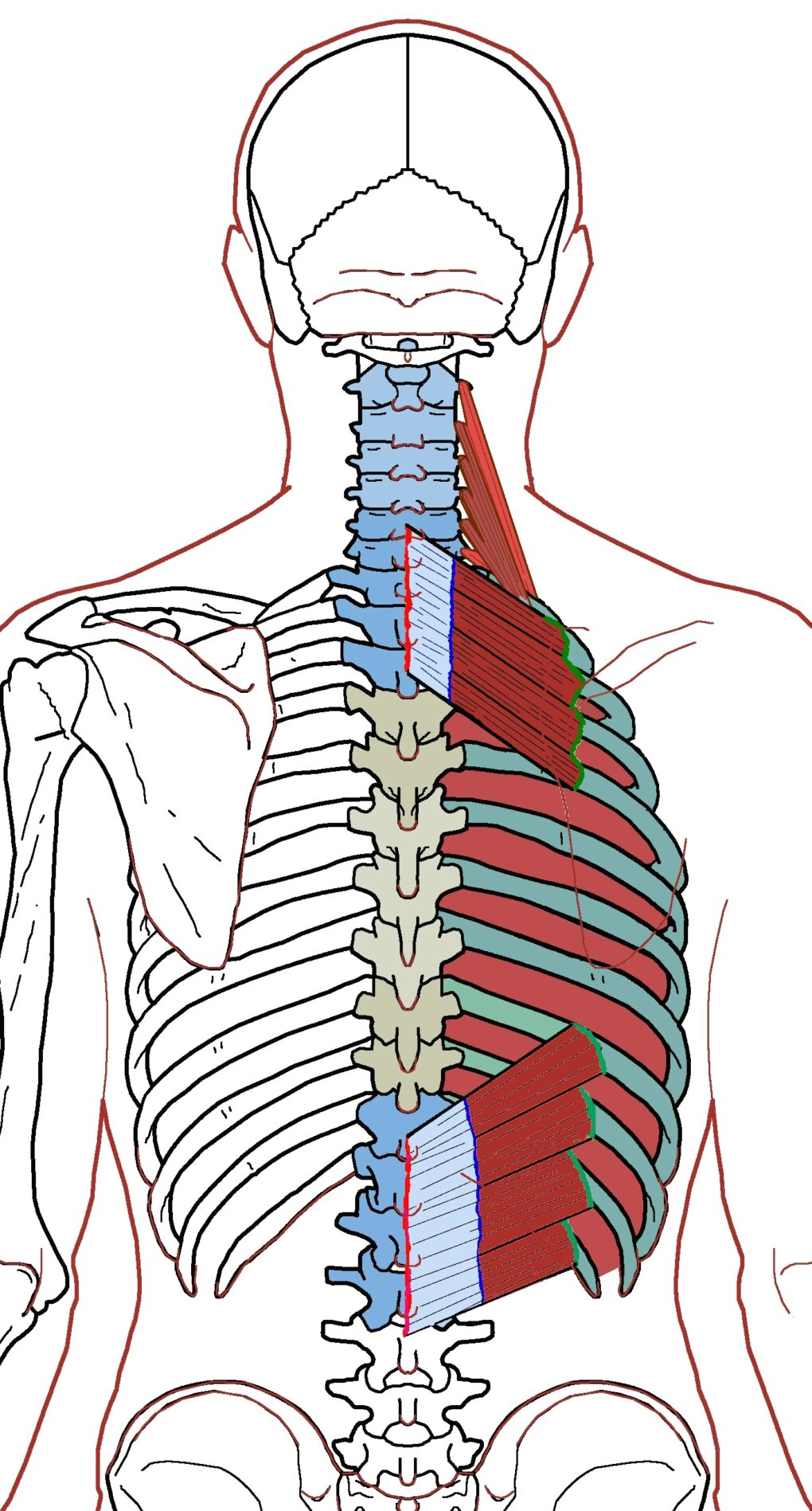
Often, breathing muscles fit into three groups:
- The diaphragm is considered as the primary breathing muscle.
- Several muscles assist breathing by pulling on the rib cage to reshape and expand lung capacity.
- Extrinsic back and extrinsic chest muscles lift the shoulder girdle and ribs during labored breathing.
This is one of the muscles that assist in the breathing process. These muscles act to expand lung capacity by pulling ribs. Therefore, they should be most active when the diaphragm cannot engage in most cases. For example, this might occur when we are bent forward while working at a desk, curled forward on a couch, or putting on our shoes.
Because of our sedentary lifestyle, these muscles tend to be over-used when breathing quietly. This is because we become trained to use them, even when the diaphragm can do the job.
These muscles include:
- Scalenes
- Serratus posterior superior
- Serratus posterior inferior
- Intercostals
Lifestyles that involve a great deal of desk work, especially computer work, create an increasing strain on serratus posterior superior. In this posture, the scapula presses into the ribs. Consequently, this aggravates the serratus posterior superior with compression and restricts breathing. As a result, the lower ribs press forward into the abdomen. Additionally, the small serratus posterior superior is working harder to lift the ribs and assist in breathing. The illustration shown is from a healthier posture. As the shoulder elevates, the scapula, hinged on the collar bone, moves medially. As a result, the vertebral border digs into the underlying muscle as the arm moves to, for example, use the mouse.
Wikipedia entry for serratus posterior superior.
Posts Related to Serratus Posterior Superior
Can’t Reach Pain Under the Shoulder Blade
Rhomboids & Serratus Posterior Superior – Neuromuscular Massage Protocol
Self Care – Breathing exercise for upper back pain
Self Care – Can’t Reach Pain Under the Shoulder Blade
Serratus Posterior Superior – Massage Therapy Notes
Support Integrative Works to
stay independent
and produce great content.
You can subscribe to our community on Patreon. You will get links to free content and access to exclusive content not seen on this site. In addition, we will be posting anatomy illustrations, treatment notes, and sections from our manuals not found on this site. Thank you so much for being so supportive.
Cranio Cradle Cup
This mug has classic, colorful illustrations of the craniosacral system and vault hold #3. It makes a great gift and conversation piece.
Tony Preston has a practice in Atlanta, Georgia, where he sees clients. He has written materials and instructed classes since the mid-90s. This includes anatomy, trigger points, cranial, and neuromuscular.
Question? Comment? Typo?
integrativeworks@gmail.com
Interested in a session with Tony?
Call 404-226-1363
Follow us on Instagram

*This site is undergoing significant changes. We are reformatting and expanding the posts to make them easier to read. The result will also be more accessible and include more patterns with better self-care. Meanwhile, there may be formatting, content presentation, and readability inconsistencies. Until we get older posts updated, please excuse our mess.

